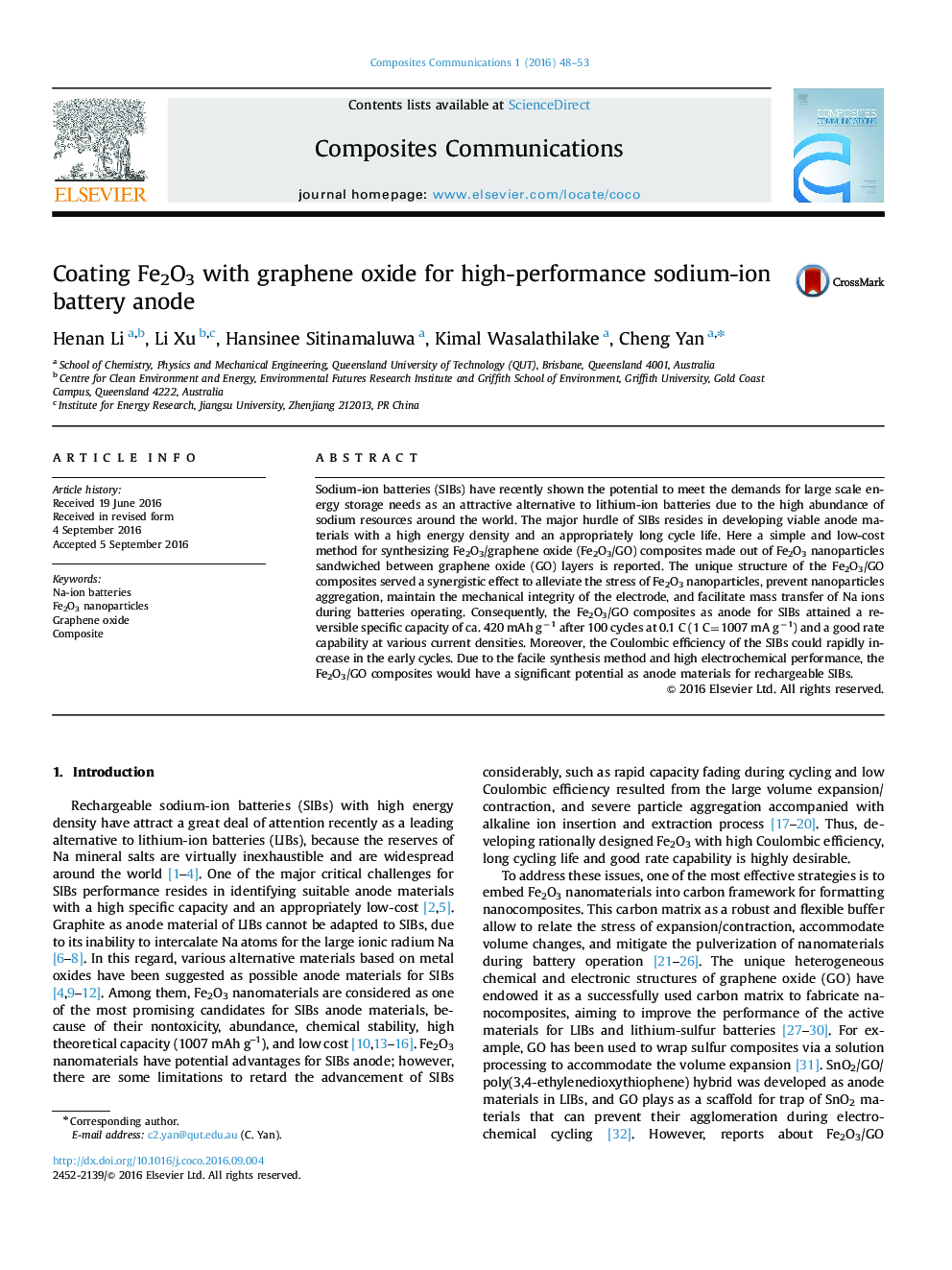| Article ID | Journal | Published Year | Pages | File Type |
|---|---|---|---|---|
| 7857689 | Composites Communications | 2016 | 6 Pages |
Abstract
Sodium-ion batteries (SIBs) have recently shown the potential to meet the demands for large scale energy storage needs as an attractive alternative to lithium-ion batteries due to the high abundance of sodium resources around the world. The major hurdle of SIBs resides in developing viable anode materials with a high energy density and an appropriately long cycle life. Here a simple and low-cost method for synthesizing Fe2O3/graphene oxide (Fe2O3/GO) composites made out of Fe2O3 nanoparticles sandwiched between graphene oxide (GO) layers is reported. The unique structure of the Fe2O3/GO composites served a synergistic effect to alleviate the stress of Fe2O3 nanoparticles, prevent nanoparticles aggregation, maintain the mechanical integrity of the electrode, and facilitate mass transfer of Na ions during batteries operating. Consequently, the Fe2O3/GO composites as anode for SIBs attained a reversible specific capacity of ca. 420 mAh gâ1 after 100 cycles at 0.1 C (1 C=1007 mA gâ1) and a good rate capability at various current densities. Moreover, the Coulombic efficiency of the SIBs could rapidly increase in the early cycles. Due to the facile synthesis method and high electrochemical performance, the Fe2O3/GO composites would have a significant potential as anode materials for rechargeable SIBs.
Related Topics
Physical Sciences and Engineering
Materials Science
Biomaterials
Authors
Henan Li, Li Xu, Hansinee Sitinamaluwa, Kimal Wasalathilake, Cheng Yan,
